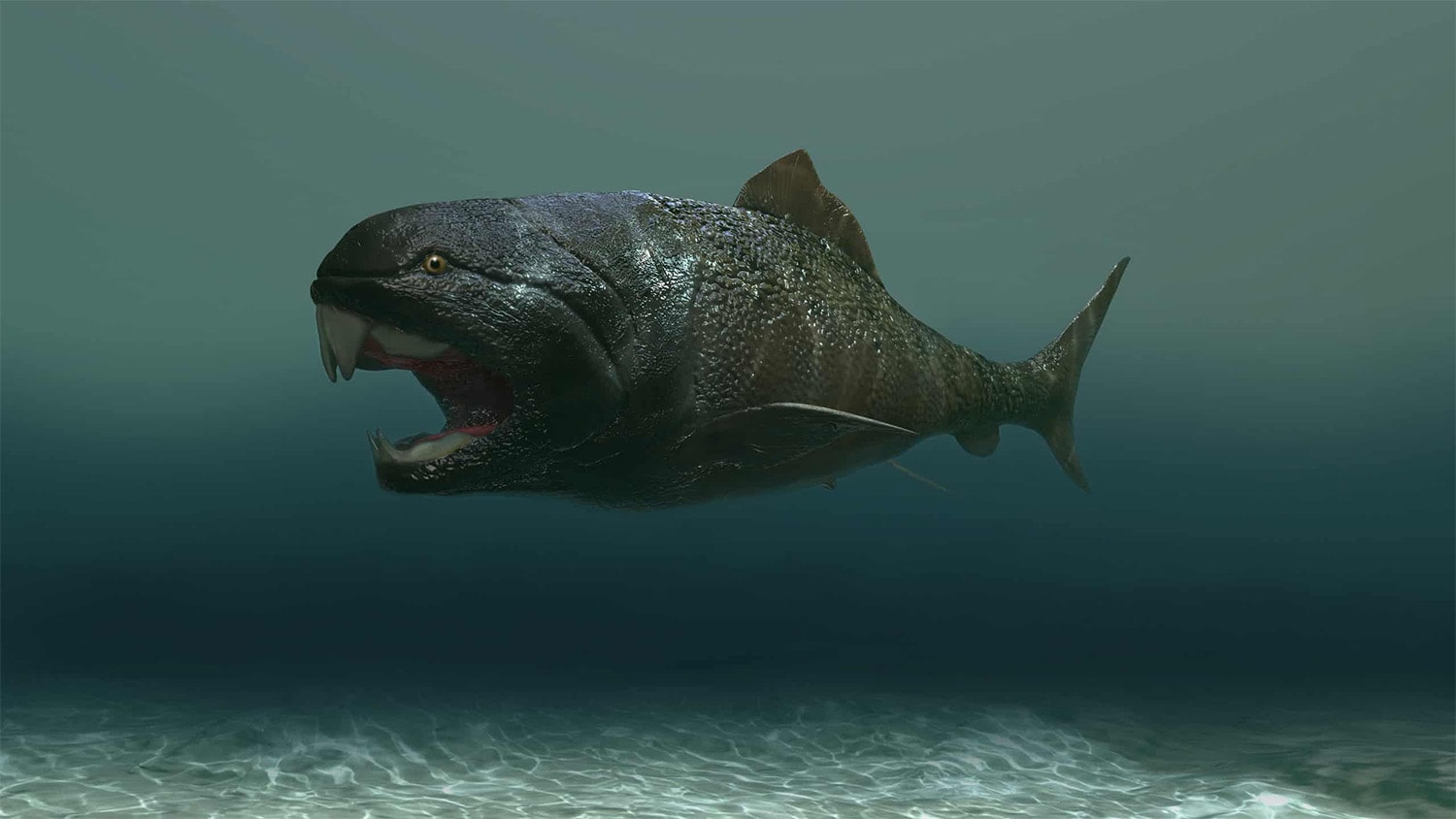
23 interesting facts about Dunkleosteus
- 👁️ 316
Dunkleosteus, a name that resonates with power and prehistoric dominance, belonged to an era when the oceans were teeming with life forms both bizarre and fascinating. This armored fish roamed the Earth’s waters approximately 358 to 382 million years ago during the Late Devonian period, a time when the first forests were taking root on land. Dunkleosteus is renowned not only for its size, which made it one of the largest predators in the seas of its time but also for its incredible biting strength, capable of pulverizing its prey with ease. Despite its extinction, Dunkleosteus has left a lasting impression on paleontology, offering insights into the evolutionary history of vertebrates and the dynamics of prehistoric marine ecosystems. Let’s dive into some interesting and informative facts about Dunkleosteus that highlight its significance in the ancient world.
- Dunkleosteus belonged to the Placodermi class, a group of armored prehistoric fish.
- It could grow up to 10 meters (33 feet) in length and weigh up to 3.6 metric tons (4 tons), making it one of the largest predatory fish of its time.
- Instead of true teeth, Dunkleosteus had two long bony plates that formed a beak-like structure, capable of slicing through flesh and bone.
- Its armored plating was made up of several pieces of bone, providing protection against other predators.
- The name Dunkleosteus honors David Dunkle, a renowned paleontologist who specialized in prehistoric fish.
- Estimates suggest Dunkleosteus could exert a bite force of up to 8,000 pounds per square inch (psi), one of the most powerful bites of any known fish.
- The fish’s jaws could open and close within a fraction of a second, creating a powerful suction to draw prey into its mouth.
- Dunkleosteus was an apex predator, feeding on other armored fish, sharks, and possibly its own kind.
- Fossils of Dunkleosteus have been discovered in North America, Europe, and Africa, indicating a wide distribution in ancient seas.
- Unlike many other prehistoric marine creatures, Dunkleosteus did not have a tail fin, which suggests it was not a fast swimmer.
- The skull of Dunkleosteus could measure up to 2 feet in length, comprising a significant portion of its body size.
- It lived in a variety of marine environments, from shallow coastal waters to deeper offshore areas.
- Dunkleosteus is part of a larger family known as Dunkleosteidae, which includes several other species of armored fish.
- The armor plating of Dunkleosteus made it one of the heaviest armored animals to have ever existed.
- Its extinction around 358 million years ago coincided with the Late Devonian mass extinction event, which affected many marine species.
- Dunkleosteus’s body behind its armored head was likely made of cartilage, similar to modern sharks, leaving few fossils beyond its head.
- Studies of growth rings in Dunkleosteus’s bony armor suggest it had a long lifespan, possibly up to several decades.
- The fish’s diet likely consisted of hard-shelled animals, evidenced by fossilized feces containing crushed remains.
- Dunkleosteus’s ability to rapidly open and close its mouth may have helped it to breathe by forcing water over its gills.
- Some theories suggest competition for food and changing marine environments contributed to its extinction.
- The discovery of Dunkleosteus fossils has provided valuable insights into the evolution of jawed vertebrates.
- Dunkleosteus is often featured in popular culture, including documentaries and video games, due to its formidable appearance and predatory nature.
- The first fossils of Dunkleosteus were discovered in the late 19th century, sparking interest in the study of prehistoric marine life.
Dunkleosteus remains one of the most intriguing and formidable predators of the ancient seas, captivating scientists and enthusiasts alike with its massive size, powerful bite, and armored appearance. Its existence sheds light on the complexity and diversity of prehistoric marine ecosystems, offering a glimpse into a world vastly different from our own. As research continues, Dunkleosteus will undoubtedly continue to be a subject of fascination, symbolizing the mysteries and wonders of Earth’s evolutionary past. Through the study of such remarkable creatures, we gain a deeper understanding of life’s resilience and the ever-changing nature of our planet.
Dunkleosteus, a name that resonates with power and prehistoric dominance, belonged to an era when the oceans were teeming with life forms both bizarre and fascinating. This armored fish roamed the Earth’s waters approximately 358 to 382 million years ago during the Late Devonian period, a time when the first…